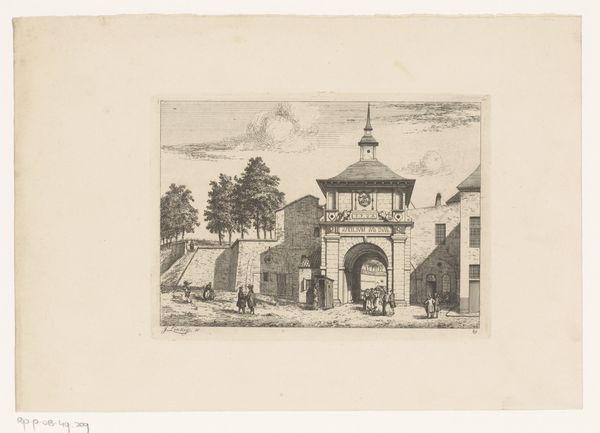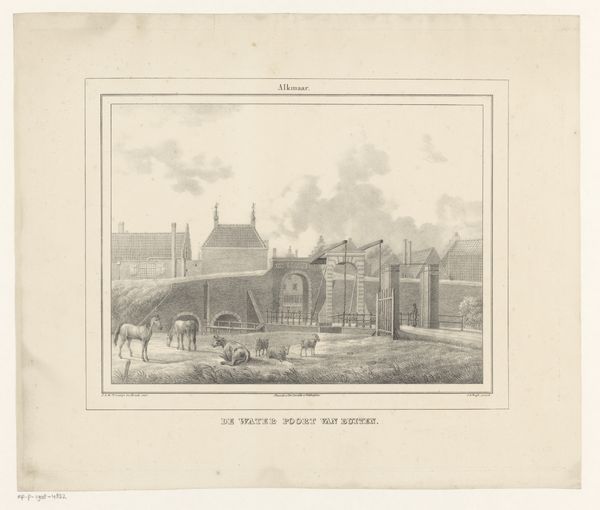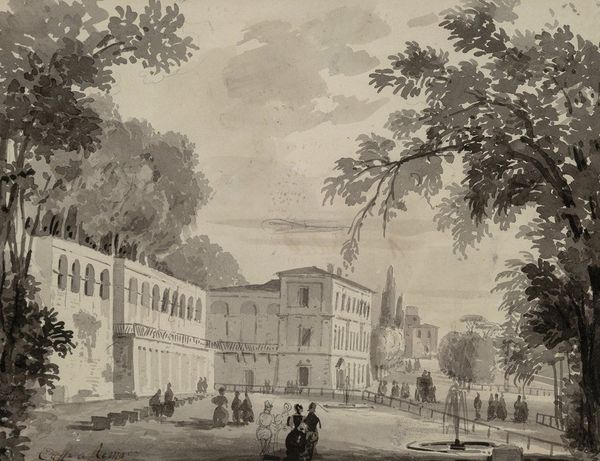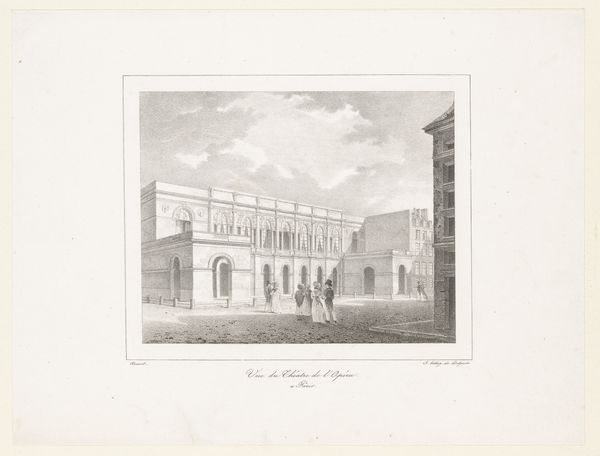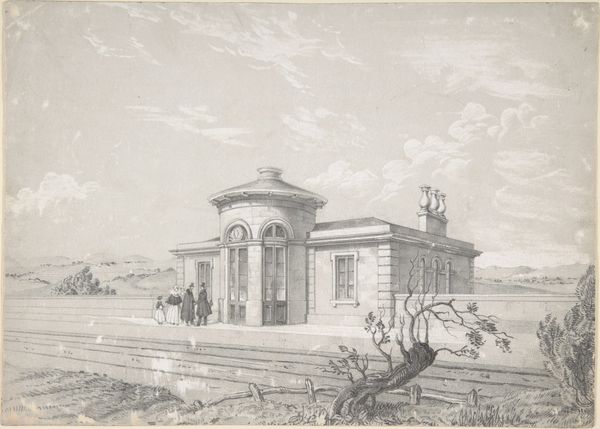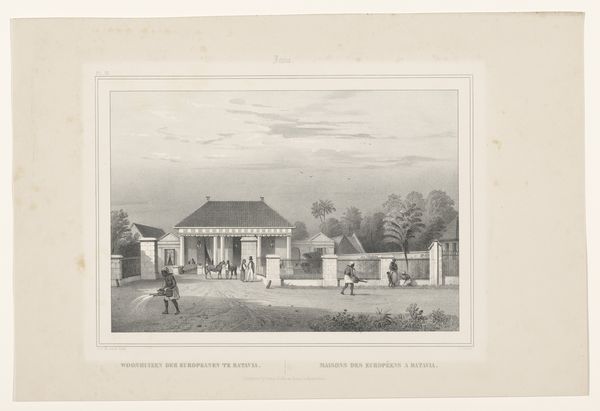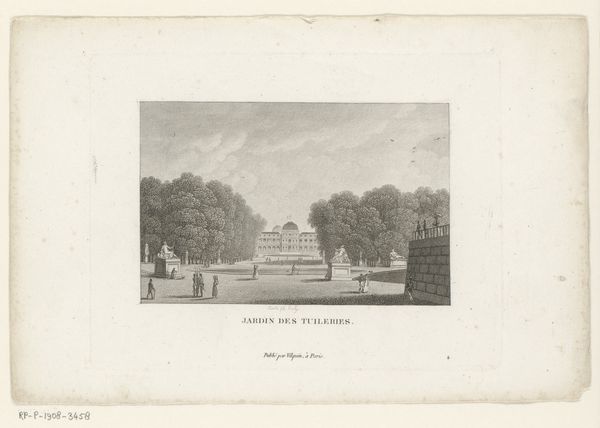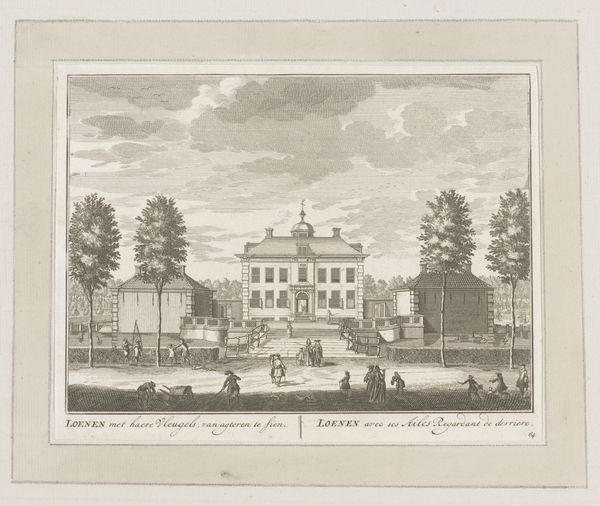
View of the entrance to the Palacio de Seteais, Sintra 1840
0:00
0:00
drawing, print
#
drawing
# print
#
landscape
#
romanticism
#
cityscape
Dimensions: Sheet: 13 1/4 × 20 7/8 in. (33.6 × 53 cm) Image: 7 7/8 in. × 12 in. (20 × 30.5 cm)
Copyright: Public Domain
Editor: This is "View of the entrance to the Palacio de Seteais, Sintra," a drawing and print from 1840. It feels…staged. The architecture is grand, but the people seem placed, not really interacting. How do you read this piece? Curator: The “staged” feeling is quite revealing. The Romantic era often idealized landscapes while simultaneously reinforcing social hierarchies. Notice how the Palacio, likely a site of power and privilege, dominates the scene. The figures, rendered with less detail, become part of the landscape, their individuality subsumed by the imposing architecture. Consider, who commissioned this piece and for what purpose? Was it meant to showcase the palace's grandeur and, by extension, the power of its inhabitants? Editor: That’s a great point, thinking about who this was for! I hadn’t considered the power dynamics inherent in even a seemingly simple landscape. Is it fair to assume that landscapes weren’t always “just” landscapes? Curator: Exactly! Especially during this period, landscapes were often laden with socio-political meaning. The Romantic ideal frequently masked the realities of class, colonialism, and industrialization. A seemingly idyllic scene could conveniently ignore the exploitation that funded such opulence. What do you think the symbols placed on the building signify in relation to the everyday lives of common people during that period? Editor: The symbols seem removed and elitist; not for everyone! Thinking about it that way makes me see the piece very differently. I thought I was just looking at a pretty drawing. Curator: And now you see a layered narrative, a visual statement about power and social structures disguised as a picturesque view. Hopefully it offers a lesson on questioning surface appearances! Editor: Definitely. It highlights the importance of context and how art can reflect and reinforce social and political ideologies. Thank you!
Comments
No comments
Be the first to comment and join the conversation on the ultimate creative platform.


